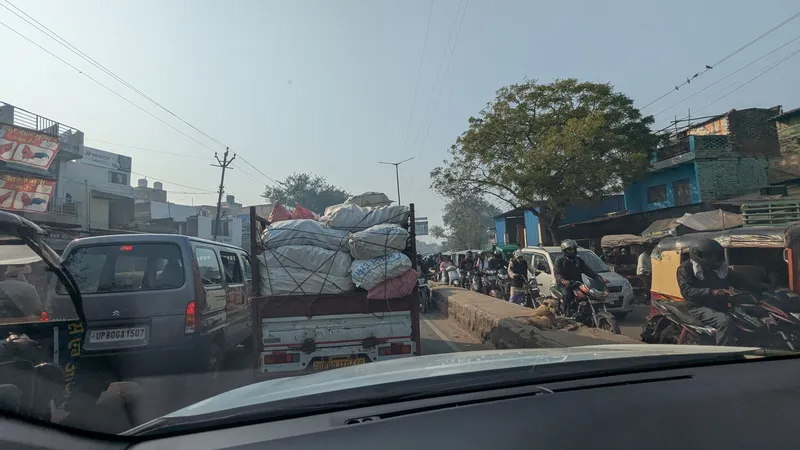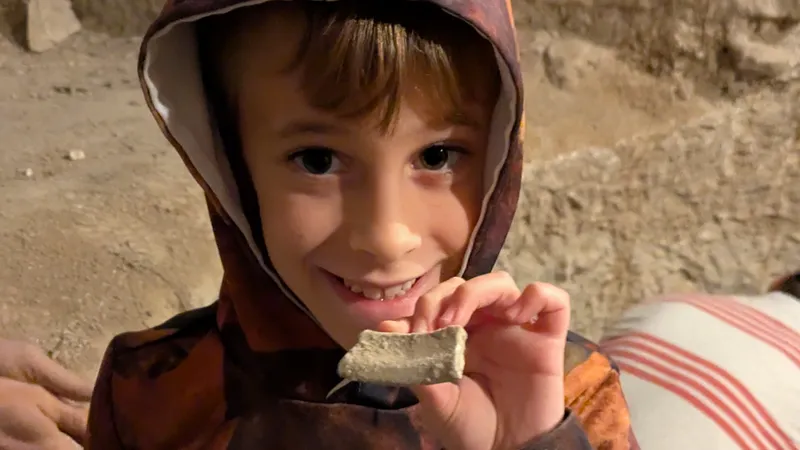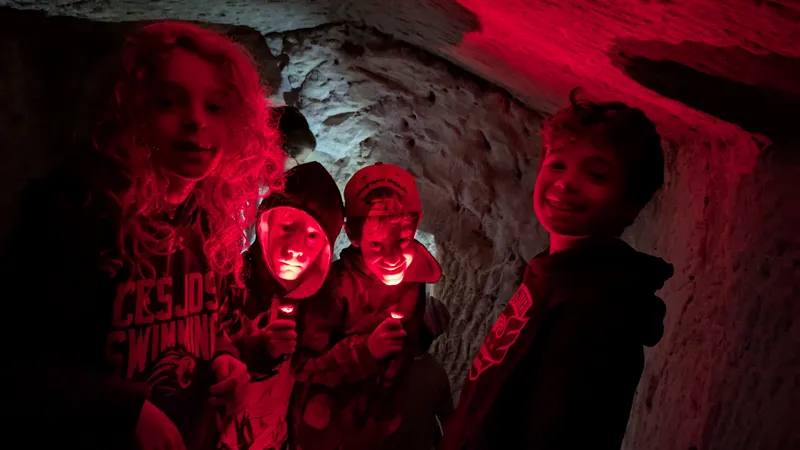The saga of Saturday November 23, 2024 until Sunday November 24, 2024 in Mitzpeh Ramon, Israel
Makhtesh Ramon/Ramon Crater is the largest erosion crater in the world and is located in Israel’s Negev desert, along the Trans-Jordanian Faultline (just like Ngorongoro Crater, which we had just visited a few weeks prior) next to the city of Mitzpeh Ramon. Hundreds of millions of years ago, the area was an ocean. Over time, the water receded, and an erosion crater formed. Small spiral ammonite fossils can still be found along the north-eastern border of the crater. The crater contains basalt limestone, sandstone, quartzite, and more. Along with the standard brown, gray, black, and white colors one expects to see when looking at rocks, are plenty of shades of purples, blues, reds, oranges, yellows, and greens. It is as if a rainbow wandered into the crater and decided to remain. Two thousand years ago, the area played a prominent role in the Nabataeans’, and later the Romans’, incense trade. Traders brought their goods from the Arabian sea over land to the port city of Gaza, to then be transported and sold along the Mediterranean Sea. The name Ramon draws from the Arabic word for Roman. It is one of the most visually stunning places I’ve ever hiked in a desert.
Above the crater sits the Makhtesh Ramon Visitor’s Center, which was erected in 2013 with a dual focus on educating visitors about the crater and on the life of Col. Ilan Ramon, the first Israeli astronaut who tragically died when the Columbus Space Shuttle burned up upon reentry into the earth’s atmosphere in 2004. The Makhtesh Ramon Visitor’s Center, perched near the top of the entrance to the crater, hosts an exhibit dedicated to Col. Ilan Ramon’s life and work.
Hiking through Makhtesh Ramon was at the top of my list of to dos for our family. In an ideal world, I would have planned a camping trip for us, but as I shared in a previous post, October didn’t work out as planned, and now the weather was getting cold. Since we planned to arrive on Saturday night after the clocks had already changed and were staying for only one night, trying to find a campsite and then set it up in the dark with four exhausted children seemed like a terrible idea. Moreover, I realized back in Athens that I do not like arriving in a new place at night, in the dark, with my children. We opted for a hotel with the goal of returning to Makhtesh Ramon in the future when the situation was more conducive to camping.
The drive from the north to the Negev is beautiful, but we missed it completely due to it being pitch black. Instead of a beautiful drive, it was more of a slightly harrowing drive around blind curves and up and steep roads. There was a rain warning, which meant we needed to watch out for flooding. In other words, the rains from the north could cause a wash where we were heading, making several roads impassable. Thankfully, our drive remained uneventful, but the flood warnings didn’t bode well for a hike in the desert. We arrived at our hotel just after 9:00PM and settled in quickly. The boys appreciated the family suite we were able to book and suggested that “more hotels should have setups like this one.” They quickly learned that most hotels do, we just could never book the room for any number of reasons each time we tried.
Eitan and I ended up sharing a bed that night. While everyone else went to sleep by 11:00PM, I somewhat idiotically began Just for the Summer by Abby Jimenez. My friend Sara had recently lent me another book by her when we stayed for Shabbat and I was hooked. I’m not usually into romcom books (movies for sure), but Jimenez has a great knack for creating a story that dives deeper into human psychology and deals with real issues such as PTSD, anxiety, traumatic childhoods, and more, while landing hilarious zingers that make me laugh out loud. Instead of sleeping, I spent the night reading Just for the Summer in its entirety, swinging from quietly sobbing to trying my hardest not to laugh hysterically and wake up everyone else. I finished at 5:00AM and managed to get in a solid three hours of sleep before we had to get moving. When I awoke, my face was as puffy as one might imagine and I did my best to pretend like I had gotten a full night’s sleep. Chaim wasn’t fooled, but the boys were!
After breakfast, I stopped by the receptionist’s desk to ask about the weather forecast. When I asked her if it was going to rain and if we needed to worry about flooding, she looked at me like I had two heads and responded, “It never rains here. I can’t remember the last time it rained.” With that endorsement, we drove to the Makhtesh Ramon observation point where two YAELS were there to greet us. They were so close we could have pet them. The boys took turns reading the different signs where we learned about two pilots and the history of the crater itself. It was ironic when we watched a family feed the goats right in front of the “do not feed” sign. The skies were mostly clear, sunny, with a few clouds. It was perfect hiking weather. Twenty minutes later we drove into the crater passing through the Rock Color Park where we could see all of the layers of rock with every color imaginable. We opted to hike the Har Herut route, an easy to moderate loop that would take us up Har Herut, a total elevation climb of 460m.
When we started the hike, we all had multiple layers on because it was slightly cool outside in the shade and there was a slight breeze. Ten minutes along our path we stopped to make some cairns of various sizes. We would circle back to them at the end of the loop. Thirty minutes later, we were in the sun. The boys learned firsthand about extreme temperature changes in the desert just because of where the sun is. They were shocked by how hot they were and were desperate for shade. As we hiked, Chaim led them in a discussion about what makes Makhtesh Ramon an erosion crater. They examined the rocks and different layers of sediment, identifying which were made of sandstone verse limestone, and the different minerals based on colors found. The best moment was when Matanel and Shai explained that this is an example of weathering, erosion, and deposition – science lessons we had just been learning about after we returned from Tanzania. Matanel wondered if this was part of the largest water cycle ever. After worrying about how we were doing with their science education for so many months, I was elated to see them making these connections. This is everything I could have wanted as an educator.
Climbing up Har Herut was invigorating. Shai, Eitan, and Amichai were all confident and scrambled their way up so quickly, we had to trust that they would make good choices and avoid falling off the edges. Chaim went ahead to try and keep tabs on them while I stayed behind with Matanel who maintains he has a fear of heights. In some respects, this is true. He is anxious when he climbs high, but it seems like the climbing part is more of an issue for him than the actual height. I have elected to ignore his fear and see if we could conquer it with a healthy dose of exposure therapy. I am certain that I did all of the things a parent isn’t supposed to do to support their child. I definitely did not validate his “but I can’t” statements. It’s not how I was raised. Instead, I would encourage him to reframe and say “this is hard, but I’m brave and can conquer this” or something like that. The truth is, for all of my brilliant ideas, Matanel was his own best ally. He came up with the brilliant idea of tapping into his imagination and giving himself retractable claws like a cheetah. Every time he’d get anxious, he’d say, “I know! I’ll just get my claws out and use them.” Once those imaginary claws were out, he went right up the mountain without any further issues. I can’t even begin to describe how proud of himself he was when he reached the top. All of his brothers were just as proud, congratulating him with high fives and big smiles.
We rested atop Har Herut for a few minutes, Eitan basking in the sun on a rock like a sun worshipper. However, just a few minutes after reaching the top we noticed a change in the weather. The temperature began dropping, the winds picked up, and a very gray, very big, and very ominous storm cloud was heading toward us. Having lived in Phoenix, AZ for a year I was well aware of the danger of flash floods in a desert. Matanel got his claws out and we flew down the mountain as quickly as we could. Down was more harrowing than up; we skidded down the rocks along narrow ledges with little time to check our footing. Big raindrops started falling just as we reached the bottom.
We picked up our pace. By the time we reached the cairns we had made at the beginning of our hike, it was pouring. The wind gusts pushed us sideways. The rain was slanted, pelting us as we struggled forward. Chaim and I tried to impress upon the boys how important it was that we reach our car sooner rather than later. The boys snapped at me. “Mom, why are YOU so anxious?” “Why would you bring us into the desert if flashfloods are possible?”, “You always tell us not to worry.” Trying to explain the delicate balance between risk taking and making wise decisions was useless at the moment. The painful pellets urged us back to the car where we got in quickly. Chaim did his best to see through his windshield as we drove up and out of the crater.
We stopped at the Makhtesh Ramon Visitor’s Center per my cousin Shelley’s advice. The boys appreciated the Ilan Ramon exhibit. They had learned about him in school in previous years. The exhibit made everything much more real. I remember watching the Columbia explode on TV and the devastation so many of us felt at the time. The exhibit’s documentary had me in tears all over again. The visitor’s center also had geology and wildlife exhibits, which helped reinforce the science lessons we’d had since beginning our journey in Iceland.
Harrowing moments aside, everyone agreed that returning to Makhtesh Ramon for a multiday camping trip and hike should be in our future. In our book, we call that a huge success. Next stop: Masada.



